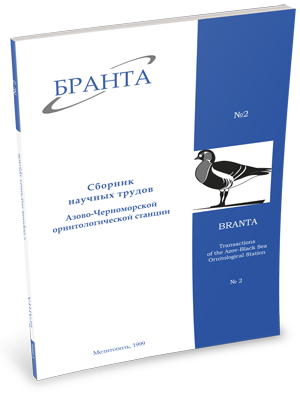
Transactions
of the Azov-Black Sea Ornithological Station



Biometry, moult and geographical connections of migrating Curlew Sandpipers in the South of Ukraine
Khomenko S.V., Diadichеva Е.A.
Nine years’ results (1990-1998) of catching and ringing of Curlew Sandpipers in the Azov-Black Sea area (mainly the Sivash) are analysed in the article. These include biometric data for 4,727 adult birds captured during spring and autumn migration and 401 juveniles, as well as 79 ringing recoveries. Age, sexual and seasonal variations are discussed along with the data on body mass and moult of Curlew Sandpipers. Probability of geographic variation among birds passing the area is indicated, although strong overlap in the body dimensions and difficulties in sexing complicate statistical confirmation.
Among the first year Curlew Sandpipers taking part in the spring migration males predominate. Both in spring and autumn males are shown to precede females in the terms of migration according to the seasonality of the wing to bill ratio. Females are shown to be generally larger, although this mainly implies to the birds of the same geographical population. Extremely low spring weights of Curlew Sandpiper sharply contrast with those during postbreeding period. This is likely to be a result of systematic selectivity of trapping method and short staging period in spring. Ringing recoveries from all over the African continent are indicative of a wide wintering range of Curlew Sandpipers migrating via Sivash. Strong relations with the Scandinavian, Baltic, Mediterranean and West African stopover sites suggest a “crossflyway ” position of the region in the species’ migration system.
Read the paper in a PDF file